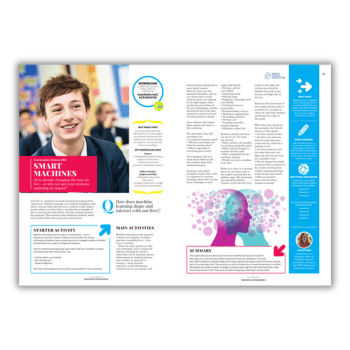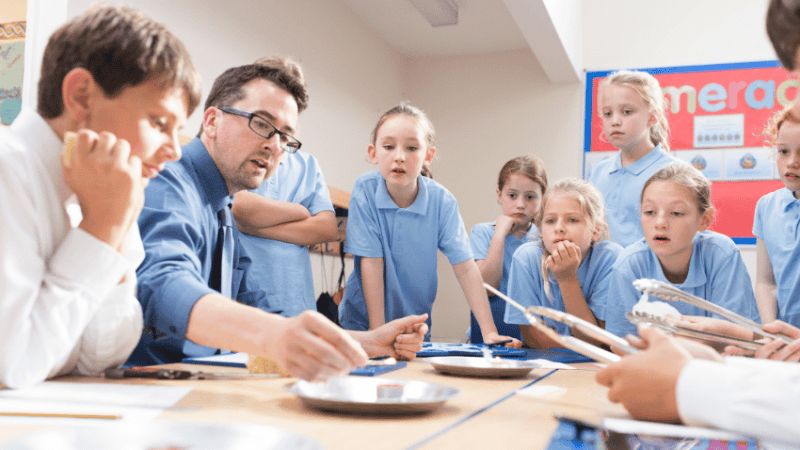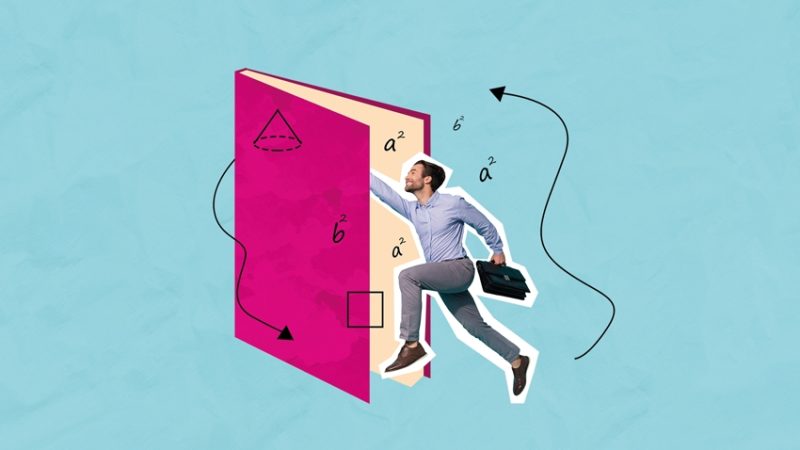KS3 Science – Why you should use roleplay in lessons

A subject that demands curiosity, investigative skills and flashes of inspiration from those studying it will naturally benefit from a creative approach to teaching it, says Paul Weeks…

- by Paul Weeks

‘Remember you’re a rat,” I say encouragingly to the anxious looking Y7 student now trapped between some rearranged desks. She looks around hesitantly and then, rat-like, starts to slowly explore her surroundings.
There’s not much to see, apart from a small electrical button. She picks the button up suspiciously – looks at it, sniffs it, and tentatively presses it. Two things then happen.
A bulb on the desk lights up and a volunteer behind the desk presents her with a Malteser. She gives a huge grin and immediately presses the button again. Another Malteser!
At this point I step in to prevent Malteser overdose, extract the student from our improvised Skinner box and send the ‘technician’ (another Y7 student) to collect another ‘rat’ from the lab next door where I’ve temporarily parked the rest of the class.
Becoming the animals
The context? This was part of our in-house Y7 KS3 science course, a half term module on animal behaviour. When I was originally writing the SoW and trying to think of lesson plans that could go beyond simple invertebrate choice chambers, I came to a realisation.
It would be impossible for us to keep enough lab rats to do a class investigation on learning behaviour, but a simple alternative would be to have the students become the study animals themselves.
This single thought opened up boundless possibilities. We couldn’t take the children to Africa to study primates, but we could bring the African savannah to school by turning the class into a troop of baboons (adult males, adult females and their young) being studied by a small subset of scientists.
The latter would be tasked with observing the baboons’ interactions, making deductions and seeing if the genetic data (acquired by ‘darting’ the baboons with paper aeroplanes in order to obtain ‘DNA samples’) supported their conclusions on maternity and paternity.
Similarly, we couldn’t spend 10 years studying cuckoo/host interactions in the wild, but we could compress an evolutionary arms race into a lesson by role playing the host birds defending their nests, and the cuckoos trying to dump their eggs into said nests undetected.
With each ‘generation’ the cuckoos are allowed an evolutionary innovation, and thus the adaptations of the cuckoo slowly evolve – eggs that match the host eggs in size and pattern, cuckoos that only lay their egg after the host birds start laying and so on.
Unexpected outcomes
Why does this approach work? Well, as you can imagine, it’s great fun – the students are immediately engaged and interested. Activities of this type involve a break from the usual routine and are memorably different.
The students will go home and tell their parents about what they’ve done, who will then relay that to you at the next parents’ evening.
It also works from a learning perspective. Six years on at A Level, students will still remember that time they were put in a Skinner box in Y7, rapidly pressing a button that rewarded them with chocolate.
Most important of all, the students are involved and engaged with their own learning. They have to not only really think, but think creatively – the hallmark of all the best scientists.
The tasks described above may be fun, but they’re challenging and can lead to some unexpected learning outcomes.
Take our baboon scientists, for example. They had to make deductions from short DNA profiles when attempting to match the infants with their parents, and were quickly able to confirm that the female baboons were indeed the mothers of the infants they most associated with, but they couldn’t work out who the fathers were.
None of them seemed to fit. Why? At first, I couldn’t understand the difficulty.
Once you realise that all the bands from a baby must match bands in either the mother or father, and that you have to account for all bands present, it’s just a simple logic problem – isn’t it? But, no, they remained baffled. Why the mental block?
And then one of them had a flash of insight. ‘Hang on,’ she said, ‘are baboons different to humans? Can one father have several ‘wives?’’
It was a brilliant lightbulb moment, one you want to capture, bottle and share with the world. They’d been trying to match up mothers and fathers with their offspring as discrete family units. This hadn’t worked, and they were consequently getting frustrated and confused.
Yet suddenly, with this new way of looking at the world, they could make sense of it all. They rapidly worked out that the alpha male was not only the father of four of the six offspring, but had – shock horror! – sired them with four different females…
Overturning preconceptions
This was quite sweet – such innocence! Such well brought-up students! – but I love anything that startles students out of preconceived views of the universe. They had framed baboon society as being essentially the same as conventional middle class, western human society, and subconsciously made certain assumptions.
Which didn’t match the evidence. So something had to give. It was wonderful to see – partly because their preconceptions of the world had been overturned, but mainly because they had made a discovery for themselves. You know, like science.
The notion that students should be able to learn through discovery runs throughout all of my teaching, and I’ve found that role play can open up a multitude of possibilities.
I like giving A Level students original data and getting them to work out metabolic pathways for themselves, but it’s equally possible to retool standard practical work for the same ends.
My Y9 introduction to enzymes provides virtually no theoretical background whatsoever. The students certainly don’t hear anything about ‘enzymes’ – I simply give them a brief description of hydrogen peroxide and how, over time, it degrades to water and oxygen.
They then carry out a simple series of experiments with hydrogen peroxide, yeast, potato and liver.
They love the excitement of the bubbles and the mess, but the key learning point comes when they’ve boiled the yeast/ potatoes/liver. They’re expecting more of the same – heat speeds things up, right? – but suddenly the reaction that was previously so much fun isn’t happening.
That’s funny (the most exciting phrase in science, according to Isaac Asimov), and needs explaining. Voila – you’ve just created the learning framework for enzyme theory, which will now gently plop into the receptive gaps that have formed in your students’ brains.
I’ll end with one final, compelling reason why I like this approach. Never mind that it’s fun, motivating, different and memorable – it works.
It works not just by enthusing students about science and the scientific method, but actually enhances learning in a way that copying notes from a PowerPoint presentation can never hope to achieve.
After the baboon lesson I always ask the class what they’ve learned, and the resulting list is invariably long.
Dominance hierarchies, stress hormones, grooming behaviour, DNA profiles and how to interpret them, baboon society, field biology, how to communicate without speaking – not bad for a Year 7 class, eh? And best of all – they hadn’t written a single thing down…
Paul Weeks is a biology teacher; for more information, visit biologicalburblings.wordpress.com or follow @BioBurbler.











